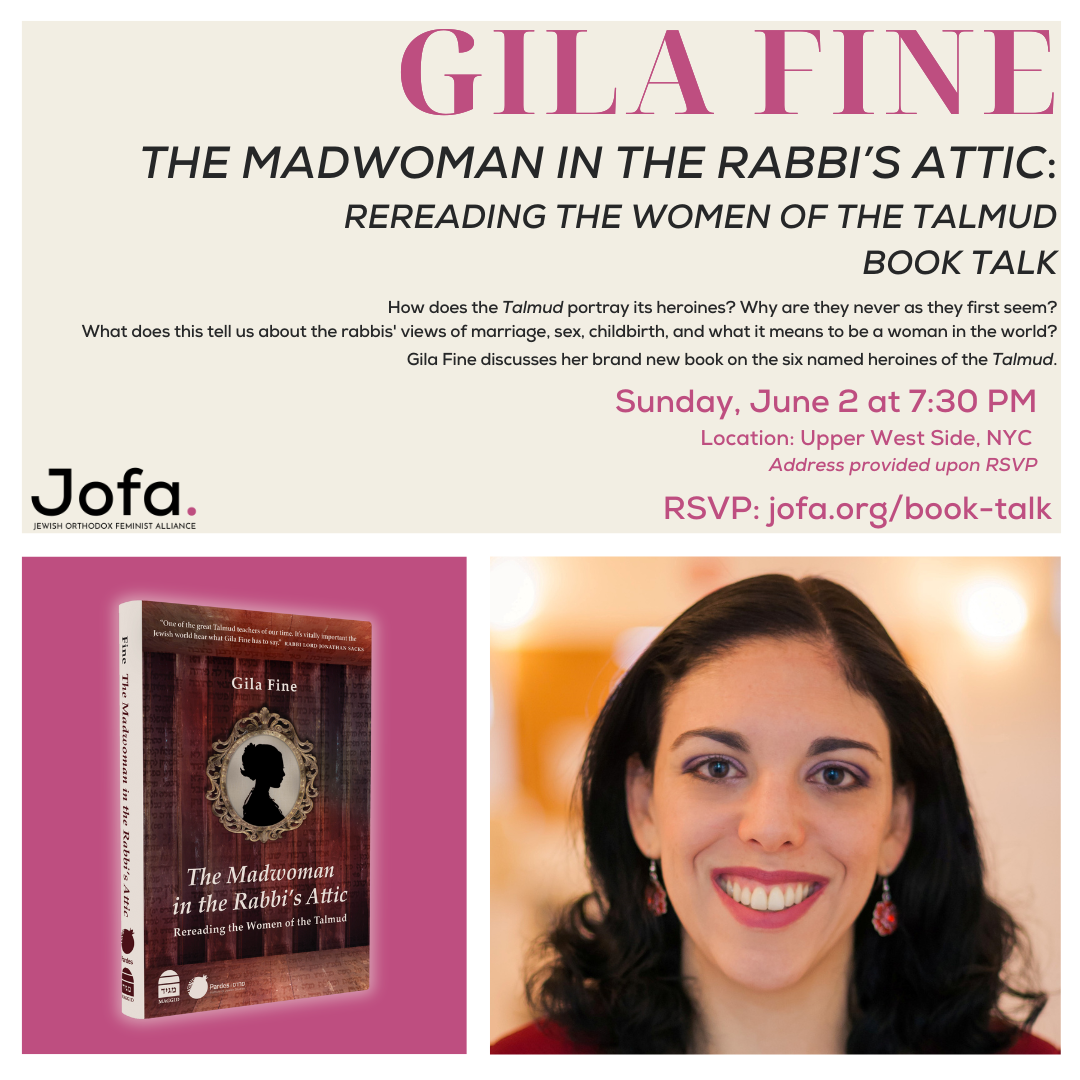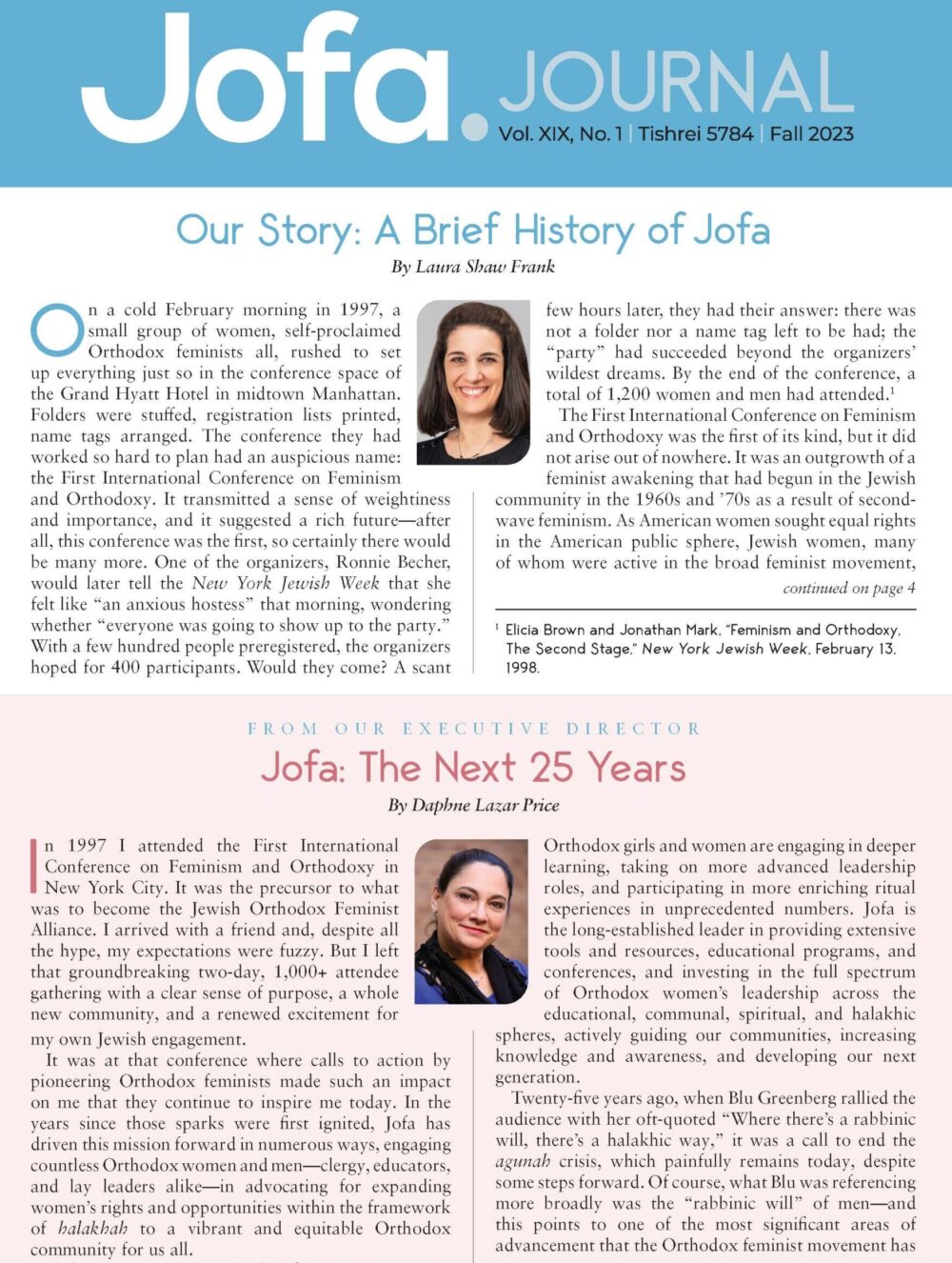By Alan M. Schwartz
Memorial Day 2009 was a milestone in the life of our family. My wife and I had chosen that Monday as the date for our daughter Eliana’s bat mitzvah, for two main reasons.
First, it would obviate concerns about Saturday travel by our non–Sabbath-observant relatives (and any time Jews have the opportunity to relieve ourselves of guilt, we take it). Second, it would enable Eliana to read from the Torah, though not on Shabbat, as the first part of the weekly Torah portion is read during the morning service every Monday and Thursday.
Fortunately, our Modern Orthodox synagogue takes a welcoming attitude toward increased women’s participation—not only encouraging sermons and divrei Torah by women on Shabbat and during the all-night Shavuot community learning program, but also enabling women to hold their own prayer services. These women’s services, always with fewer than ten men present, take place on occasions such as Purim (when the Megillah is read) and bat mitzvahs such as ours. If ten men are present, a minyan is formed and certain parts of the service, which involve d’var shebikedushah (sanctified text), become the men’s responsibility; therefore, women’s tefillah services cannot be attended by more than nine men. Having tutored dozens of local bar mitzvah boys, I was thrilled to have the privilege of teaching my own daughter to leyn the Torah, and proud that she wanted to do so. And, of course, as a modern American parent, I was pleasantly surprised to find that my preteen acknowledged that I might know something she could learn from me!
Preparation for the Bat Mitzvah
The whole experience of preparation, pressure, and performance was at once stressful, exhilarating, and joyously hectic. Making time for lessons, planning the details and logistics of the service, and, especially, planning the party (credit goes to my wife’s keen and irrepressible organizational skills) were all challenging—but, in the end, pricelessly rewarding.
It was also the last family celebration for my mom, Eliana’s Grandma Ruth, who was happy beyond words that day, having waited into her nineties to see the bat mitzvah of her first granddaughter, but who passed away only five months later.
Sitting Behind the Mehitzah
But of all these memories, the impression that lingers most pointedly—perhaps because it was so unexpectedly transformative—was the feeling I got while sitting behind the shul’s mehitzah. I was one of nine males watching Eliana, her mom, her friends and cousins, and the other women of the shul lead and conduct the service that I could not take part in. After a lifetime of active personal participation in synagogue prayer, I was experiencing a new, surprising, and rather uncomfortable sensation of enforced restraint and passivity. Not that I felt entirely excluded—after all, I could still recite the prayers, follow the Torah reading, and sing when others sang. But I was aware of an unfamiliar, unexpected state of restrictedness, of confinement—a force field keeping me in my place.
Ironically, counterintuitively, I actually enjoyed the experience. “So this is how it feels,” I kept thinking. Yet it was too easy for me to feel self-righteous in my realization. After all, it would soon be over, and I would return to my accustomed privileged seat across the divide.
Although my time behind the mehitzah was relatively fleeting, I understood that there was a valuable lesson in it. I consider myself Orthodox, and I accept the putative halakhic imperative for the separation of the sexes during prayer. At the same time, I realized that day (and have often thought about it since) that my experience sensitized me—and could sensitize other men—to the dispiriting separateness, even isolation, that many (though certainly not all) Orthodox women feel because of the mehitzah.
Not Advocating No Separation
My point is not to advocate removal of the separation barrier altogether. Like many of these women, I understand and accept the mehitzah’s presence and its purpose: buying into the positive rationale that the mehitzah enhances the religious focus of both genders. But my experience has prompted me to urge other Orthodox men to consider and comprehend the psychological impact of the barrier and to use that recognition to sensitize themselves to the validity of a traditional Jewish woman’s desire for halakhicly sound expansion of her opportunities for spiritual expression.
Eliana has always been high-spirited and assertive, and we just knew that her coming-of-age celebration would reflect her personality. I was proud to see Eliana’s confidence in mastering the chanting of the Torah and in taking center stage on the bima for the first time. But I have seen the same glow of pride in the faces of women in our shul who carry the Torah or deliver the Shabbat sermon for the first time—realizing a long-unmet ambition and gratified that their daughters can enjoy the luxury of taking these basic honors for granted.
In the end, taking my bat mitzvah lesson to heart has taught me to strive toward meeting an important moral challenge: how to literally put myself in another’s place.
Alan M. Schwartz, a graduate of Yeshiva University and New York Law School, formerly served as research director for the Anti-Defamation League. He and his family live in Teaneck, New Jersey.
“After a lifetime of active personal participation in synagogue prayer, I was experiencing a new, surprising, and rather uncomfortable sensation of enforced restraint and passivity.”
“My experience sensitized me—and could sensitize other men—to the dispiriting separateness, even isolation, that many Orthodox women feel because of the mehitzah.”









